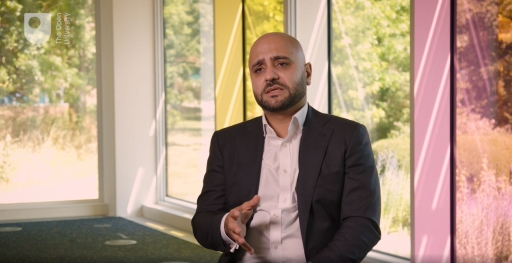5 Social capital and diversity
Box _unit4.6.1
Spotlight on…
Social capital is not covered under the protected characteristics of the Equality Act 2010, but it does have an underlying influence on the discrimination experienced by many. If an individual has low social capital, that compounds the impact of discrimination by reducing their power and opportunity to combat or overcome it.
If you are interested in exploring the links between social capital and protected characteristics further, there are many research papers linking social capital with discrimination and you’ll find some of them in Further Reading.
There are many different definitions of social capital, which vary depending on the context and expertise of the author. For the purposes of this course, some of the more relevant definitions include:
The ability of actors to secure benefits by virtue of membership in social networks or other social structures.
The processes by which social actors create and mobilize their network connections within and between organisations to gain access to other social actors’ resources.
Features of social organisation such as networks, norms, and social trust that facilitate coordination and cooperation for mutual benefit.
Social capital relates to the way in which your colleagues see you. Do they hold you in high regard? Are you well known for the right things?
You’ll see that several of these definitions refer to networks, and the availability of these networks to an individual can depend on a wide range of factors.
Career advancement
Put simply, the higher your social capital, the better connected you are to people with access to valuable resources. In the world of work, those could include opportunities for employment, personal skill development or career progression.
IResearchNet (no date) explains that building social capital in the workplace can give an individual access to ‘timely information from others, such as a company’s difficulties while job seeking or a new boss’s personal format preferences for compiling a report’ which can help them avoid career setbacks.
The author also suggests that mentoring is a good workplace example for the building of social capital. For example, the mentor builds social capital within the organisation, which might be exchanged for leadership opportunities, and the mentee can receive ‘constructive feedback for personal development, sponsorship for advancement opportunities, and moral support in times of difficulty’.
You’ll find out more about mentoring and sponsorship in Week 6.
Activity _unit4.6.1 Activity 4 Enhancing your own social capital
Spend a few minutes reflecting on your own social capital. It is a difficult concept to measure, but can you broadly assess whether yours is low or high? How well developed are your social networks? How have they helped your career?
Focusing on the workplace, think about how you could enhance your social capital and make notes in the box below.
Comment
Enhancing your social capital is essentially about building your networks, so you might choose to find a mentor, join a new workplace working group or volunteer to sit on a committee. Looking for opportunities to meet more people from across your organisation, sector or community, will increase your social capital.
Building social capital
Claridge (2017) offers the following advice for building social capital:
- Talk – give priority to the social interactions that we may not perceive as having as much value as getting a report finished. Spend time talking to people and getting to know their background, interests, beliefs and values.
- Connect – build and reinforce social relationships with repeat interactions over time.
- Give – sharing information, giving or loaning equipment, doing something for someone, giving your time to listen, etc. This builds trust and respect, and a willingness to give to you in future.
- Value – value the knowledge and expertise of other people around you, including the person who delivers the milk or the post. That person may have valuable knowledge and skills that you don’t have.
Although the advice is aimed at the individual, a more communicative, open and friendly environment could easily be encouraged in the workplace.
Social capital, COVID and new ways of working
If social capital is essentially about ‘the benefits derived from being social’ (Claridge, 2014), it is easy to see how the COVID-19 pandemic could have had a significant impact on the social capital of many individuals.
Social distancing, furlough and working from home have inevitably decreased our range of social interactions.
Sato (2020) describes the findings of a recent survey of 2,400 UK and US workers:
Of those who claim to have become more productive since the switch to remote working, three quarters already know at least half of their company. This suggests that many of us were trading on existing relationships during lockdown to survive what has been described as the world’s largest remote working experiment.
Basically, those individuals already had high social capital and were able to use that during the pandemic.
Sato goes on to discuss the benefits of an office environment in allowing people to build social capital through everyday interactions, and the risk that over a prolonged period of remote working, social capital can decline. This is also an issue for new staff, particularly those at the beginning of their career, and the difficulty for them in building those vital social networks.
While reduced social interaction has been negative for some in this context, remote working has had a positive impact on the working lives of others. Asif Sadiq explains.

Transcript: Video 2: How the pandemic changed DEI
From an employer’s perspective, there is evidence of strong links between social capital and job satisfaction and productivity. Looking at trust, social interaction, norms and sanctions as dimensions of social capital in the workplace, Lange (2015) found they had a strong influence on worker’s job satisfaction and well-being. Similarly, Clausen et al (2019) found an association between social capital in the workplace and self-reported job performance, work engagement, and psychological well-being.
So it is in the employer’s interest to enhance social capital internally for all employees, not just those in diverse groups and special thought should be given to how social interaction can be encouraged when remote working.
Enhancing social capital in the workplace
In Activity 4, you considered your own social capital and how you might improve it. In the next activity, you’ll think about how you can support the social capital of others.
Activity _unit4.6.2 Activity 5 Enhancing the social capital of others
Choose a diversity group that you have a strong interest in supporting, either internally or externally. This could be for personal, team or organisational reasons.
Spend a few minutes listing ideas for how you, your team, or your organisation might enhance the social capital of individuals in that group. Think about Claridge’s advice to talk, connect, give and value. How can you offer them those opportunities?
Comment
In Week 6 you will look at raising awareness of your brand among target groups within the community. Offering them opportunities to talk and connect would be a valuable starting point, for example through taster days or open events or offering a mentoring programme to young people.
Internally, there will be many ways in which you can bring current employees together to discuss and collaborate with colleagues from different departments across the organisation. Perhaps some training on how to network effectively would also be valuable.

